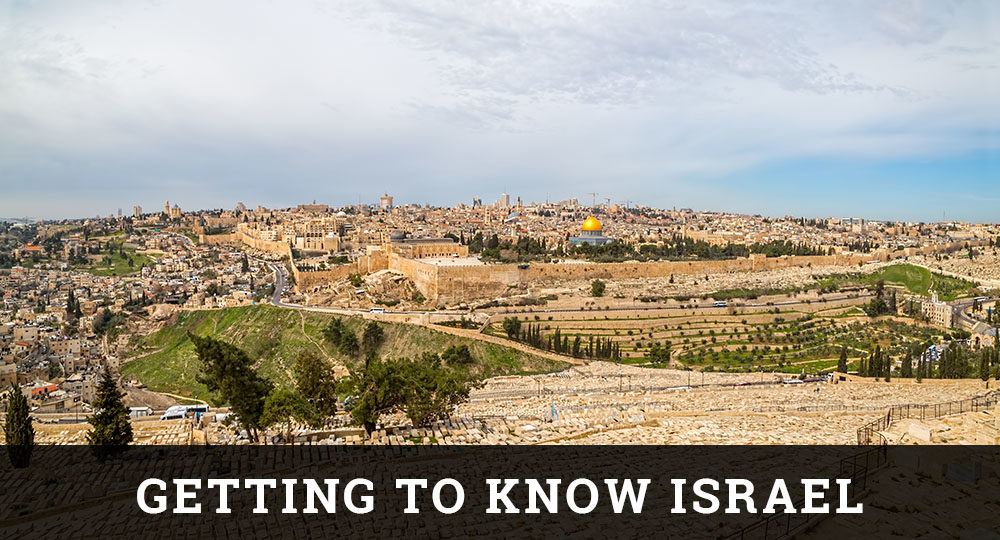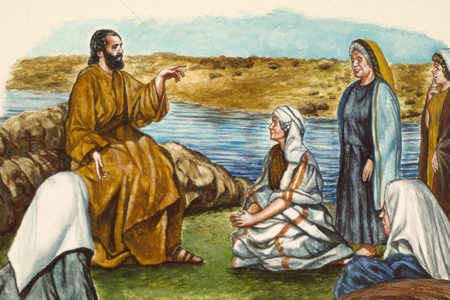Approaches to Jerusalem Part One
Regardless of your point of origin in Israel, with rare exception, if you are headed for Jerusalem, you are going up. Its elevation is nearly 3,000 feet above sea level. It is nestled in the midst of the central hill country, with severely eroded valleys falling off both its east and west sides. The terrain, as well as the elevation of the city, forces you to look up. Therefore, if you’re going to approach the city, you must think up.
The western approaches to Jerusalem are linked together with the east-west valleys that cut into the hill country from the coastal plain. These valleys bisect both the Shephelah (lowlands) and the more mountainous terrain of the hill country. Several biblical events are associated with these approaches.
The northernmost approach is the upper and lower Beth-horon ridge route, which is the most direct route to Jerusalem from the coastal region. In Scripture, this route is commonly called “the ascent of Beth-horon.” It is most famous for the battle between Joshua and the five kings of the Amorites, recorded in Joshua 10. God enabled Joshua to win this battle by causing the sun to stand still (Josh. 10:12). This approach to Jerusalem overlooks the Aijelon Valley.
The Valley of Elah, another famous valley that serves as an approach to Jerusalem, is actually two valleys south of the Aijelon. This lush, expansive valley is surrounded by undulating hills carpeted with rich agricultural fields. Every Sunday school pupil knows this valley (although perhaps not by name). More stones are removed from this area by tourists than from any other spot in Israel. This valley marks the place where David and Goliath squared off in battle. Alas, no one yet has found the stone that did the job on Goliath.
One other valley that serves as a western approach to Jerusalem and deserves some attention is the Lachish Valley, the next southern neighbor of the Elah Valley. The entrance to this valley is guarded by Tel Lachish, a massive and significantly fortified tel strategically located to protect the southern entrance to the hill country. Its size exhibits its political and military importance, as it rises about 50 feet from the valley floor and is more than ten acres across. From the days of Joshua (Josh. 10) to the period of the divided kingdom (2 Kings 18; Isa. 36–37), Lachish and its valley have served as a significant entrance to the hill country on the way to Jerusalem.
As a result of the importance of these approaches to Jerusalem, every king of Israel (and those who occupied Israel at different periods in history) knew the importance of fortifying these access routes. If an enemy wanted to conquer Israel (Judah), it had to capture Jerusalem. And if that enemy wanted to capture Jerusalem, it had to take the most accessible route to the plateaus surrounding the city.
But there is more than one type of approach to Jerusalem. Those making peaceful pilgrimages to this magnificent city or going there just to worship come with joy and anticipation. Isaiah commented on this form of worship when he said, “Ye shall have a song, as in the night when a holy solemnity is kept; and gladness of heart, as when one goeth with a flute to come into the mountain of the Lᴏʀᴅ, to the Mighty One of Israel” (Isa. 30:29). On festive holidays, the songs sung as the pilgrims approached Jerusalem were known as the Songs (Psalms) of Ascents or Psalms of Degrees (Psalms 113–118). The emotional and spiritual climax of these psalms is captured in Psalm 118:22–24: “The stone which the builders refused is become the head of the corner. This is the Lᴏʀᴅ’s doing; it is marvelous in our eyes. This the day which the Lᴏʀᴅ hath made; we will rejoice and be glad in it.”
Whether you approach Jerusalem for war or for peace, you still must go up. One day, people will go up to Jerusalem for a more glorious reason. Jerusalem will have a new name and a new purpose.
For Zion’s sake will I not hold my peace, and for Jerusalem’s sake I will not rest, until her righteousness go forth as brightness and her salvation as a lamp that burneth. And the nations shall see thy righteousness, and all kings thy glory; and thou shalt be called by a new name, which the mouth of the Lᴏʀᴅ shall name. Thou shalt also be a crown of glory in the hand of the Lᴏʀᴅ, and a royal diadem in the hand of thy God. Thou shalt no more be termed Forsaken, neither shall thy land any more be termed Desolate; but thou shalt be called Hephzibah [My delight is in her] and thy land Beulah [Married]; for the Lᴏʀᴅ delighteth in thee, and thy land shall be married (Isa. 62:1–4).








